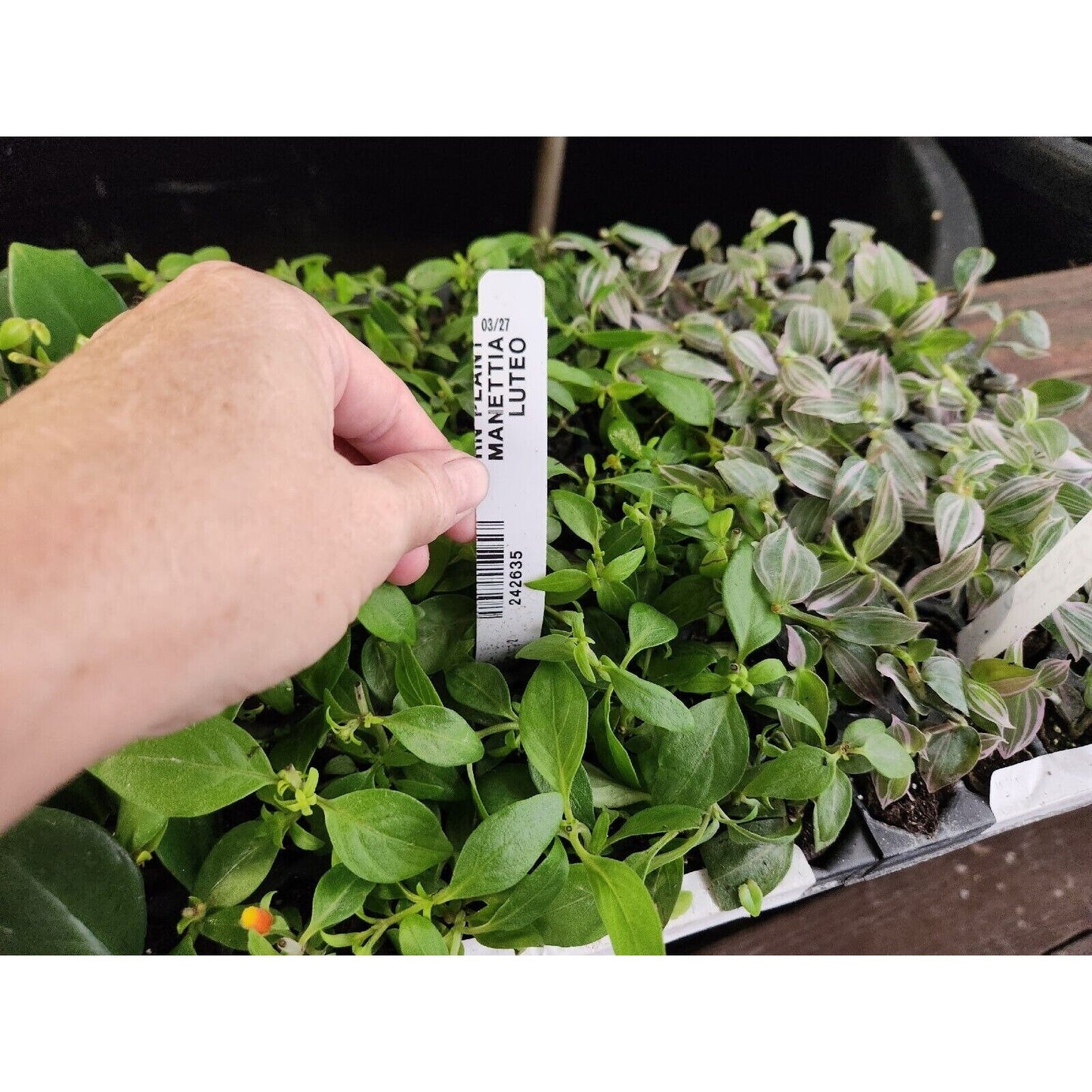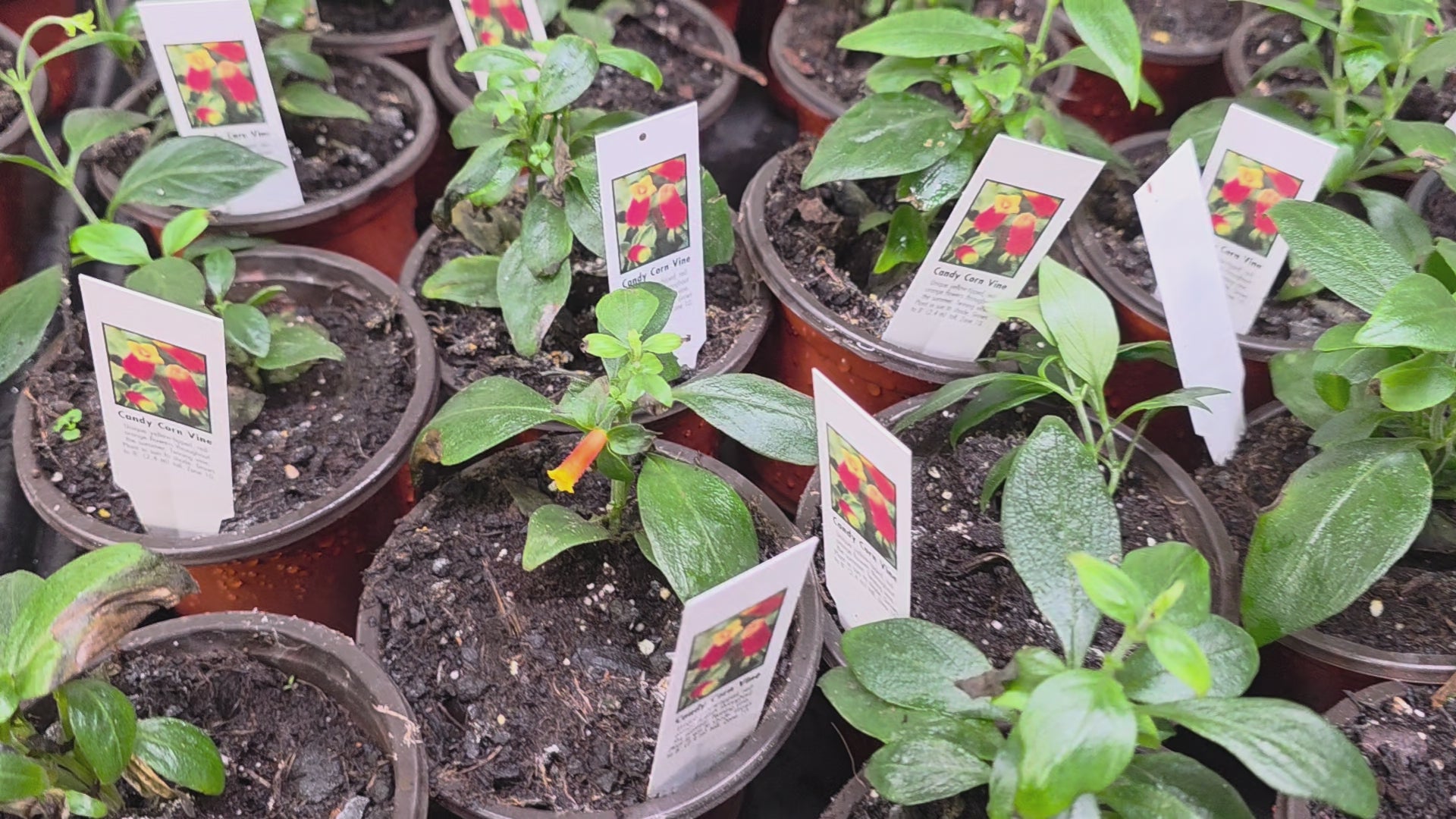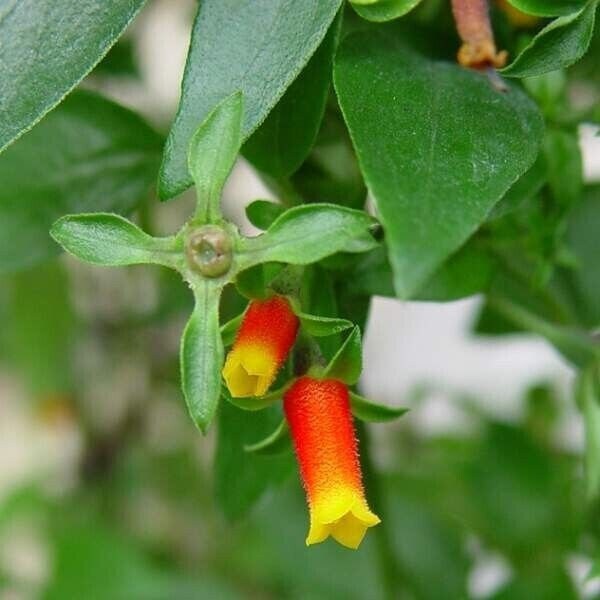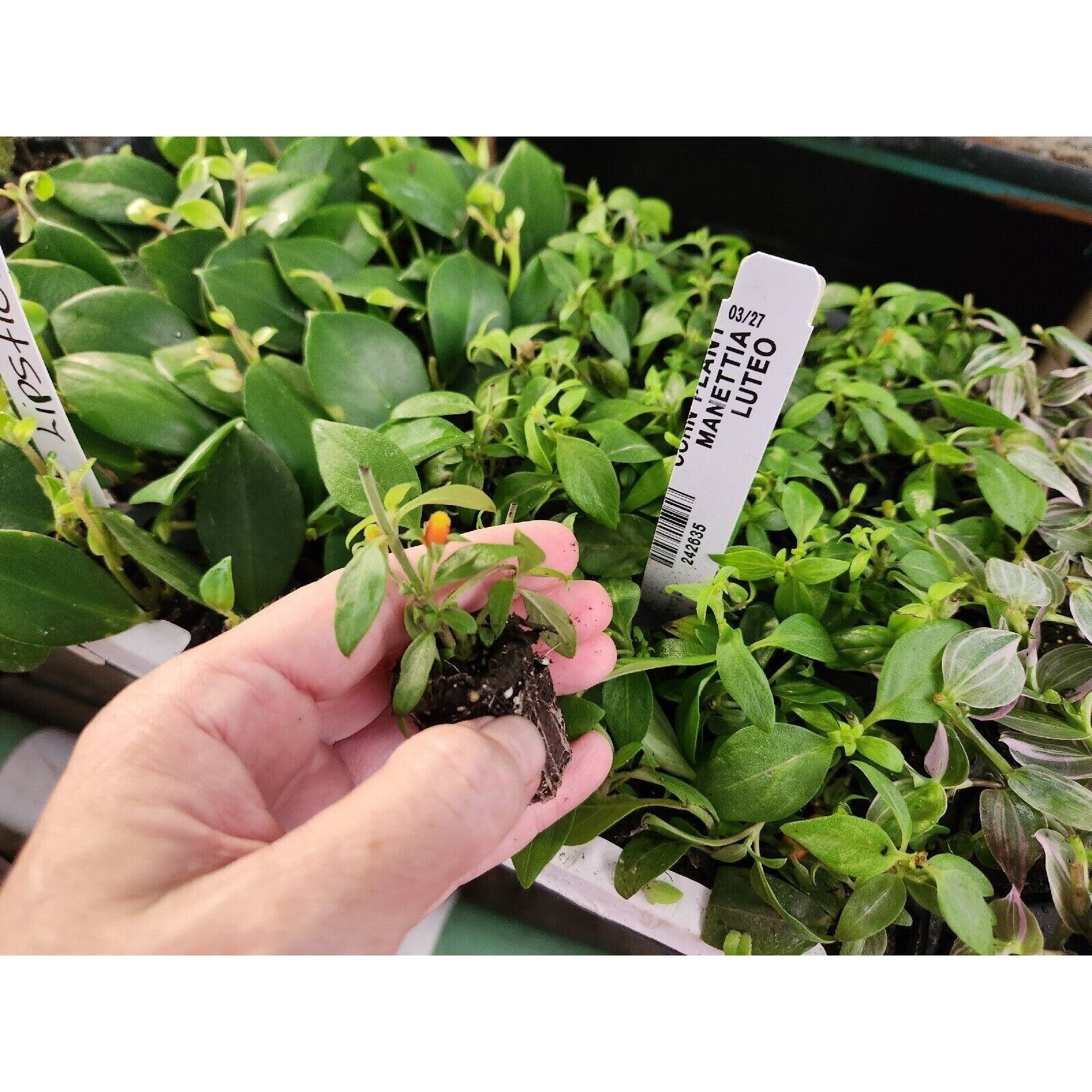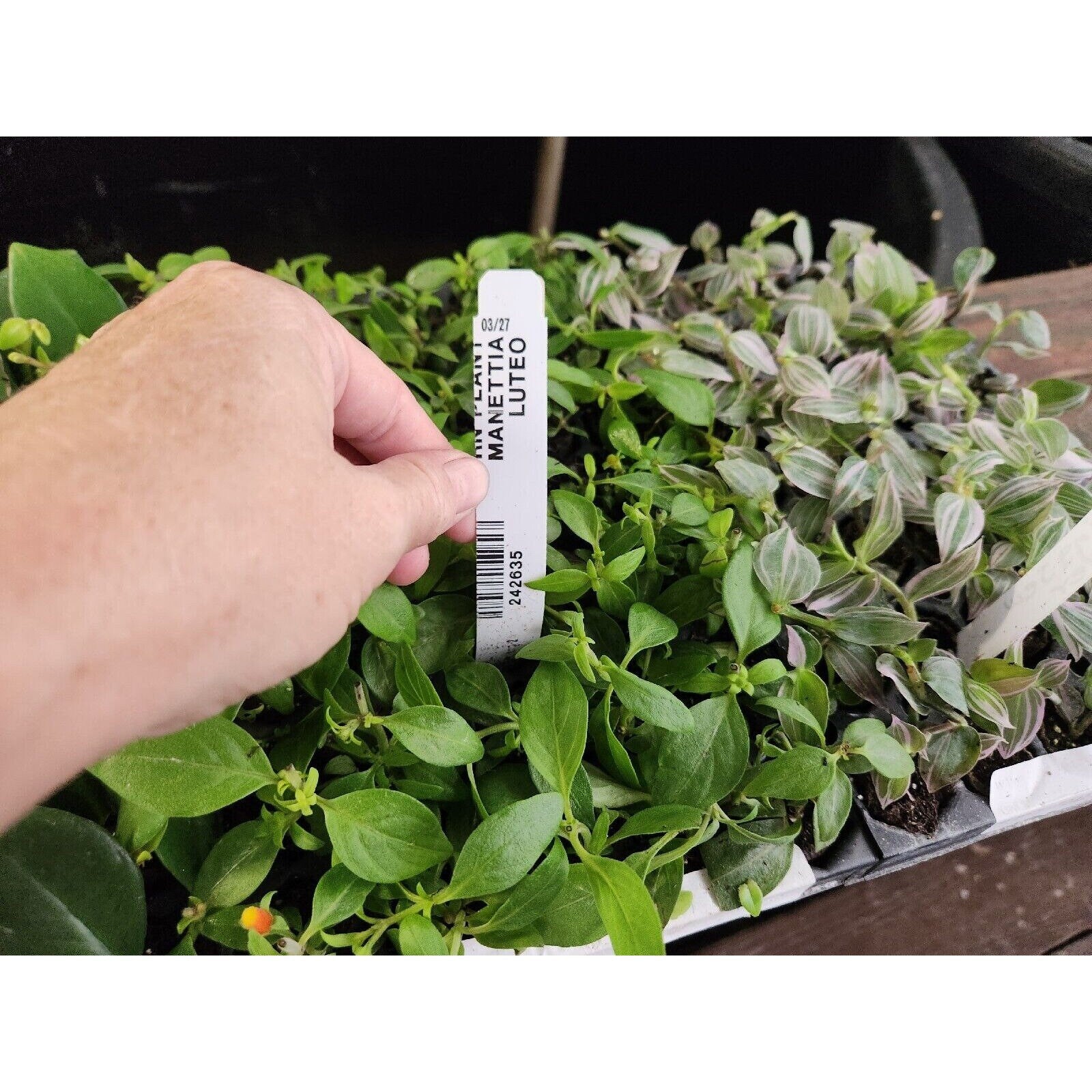Diane Van Dyk Co.
Candy Corn Vine Rooted Starter Plant about 2 inches tall RARE
Candy Corn Vine Rooted Starter Plant about 2 inches tall RARE
Couldn't load pickup availability
Candy Corn Vine Rooted Starter Plant about 2 inches tall 1 Live Plant RARE.
This is a rooted starter plant/plug
I combine shipping
The "Candy Corn Vine" is a popular, fast-growing, evergreen vine known for its distinctive red-orange and yellow tubular flowers that resemble candy corn. Its scientific name is Manettia luteorubra. It is also sometimes referred to as "Brazilian Firecracker Vine" due to the appearance of its blooms.
Manettia Candy Corn Vine, Starter Plants Lot of 2 - Sandy's ...
How to Grow and Care for Candy Corn Plant
Manettia Vine Care - How To Grow A Candy Corn Vine ...
Grow Candy Corn Vine as a Sweet Treat for Hummingbirds ...
SUPER SALE Candy Corn Vine Live Plants Manettia Bicolor ...
Here's a breakdown of its characteristics and care:
Appearance: The vine produces abundant, bright red-orange flowers with yellow tips that look like pieces of candy corn. These flowers are tubular in shape and are nearly an inch (2.5 cm) long, growing on short stalks from the leaf axils.
Growth: It's a vigorous, twining vine that can reach heights of 6 to 12 feet, according to Birds and Blooms. It needs support to climb, such as trellises, fences, or stakes.
Growing Conditions:
Light: Prefers full sun to partial shade. For indoor growing, a south or west-facing window is ideal.
Soil: Thrives in well-draining, moderately fertile soil. Clay soil is also acceptable.
Water: Keep the soil evenly moist during the active growing season (spring through fall). Water sparingly in winter.
Temperature: This is a warm-season plant that prefers average room temperatures (65-75°F/18-24°C). It is hardy in USDA zones 9-11. In colder climates, it can be grown as an annual or overwintered indoors.
Care:
Fertilizer: Fertilize every other week during the growing season (spring through fall) with a high-phosphorus fertilizer diluted by half.
Pruning: Prune plants freely to maintain the desired size and shape. Pinching promotes denser growth and more flowers. Trim vines as needed to prevent them from overgrowing.
Pests and Diseases: Generally resistant to pests and diseases, but can be susceptible to aphids, whiteflies, spider mites, and mealybugs. Botrytis, a grey rot associated with wet conditions, can occur in early spring.
Uses: Ideal for trellises, fences, lattices, or hanging baskets. Attracts hummingbirds, butterflies, and bees. Makes a great addition to pollinator gardens.
Propagation: Can be propagated from stem cuttings in the spring. Take 4-inch cuttings from non-blooming softwood stems, remove the lower leaves and flowers, and insert the bottom half of the cutting into a moist perlite and peat moss mixture. Place the cutting in a partially shady location and keep the soil moist until roots develop (approximately six weeks). Once roots are an inch long, repot in potting soil.
Note: There is another plant also commonly called "Candy Corn Plant," scientifically named Cuphea micropetala. While sharing the common name due to its similar-looking flowers, it's a small shrub, not a vine, and belongs to a different family (Lythraceae). The Candy Corn Vine (Manettia luteorubra) is a member of the coffee family (Rubiaceae). The Candy Corn Plant (Cuphea micropetala) is generally not recommended for growing indoors due to its larger size.
It's important to be aware of the differences when selecting your plant, as there can be some confusion due to the similar common name.
Share


